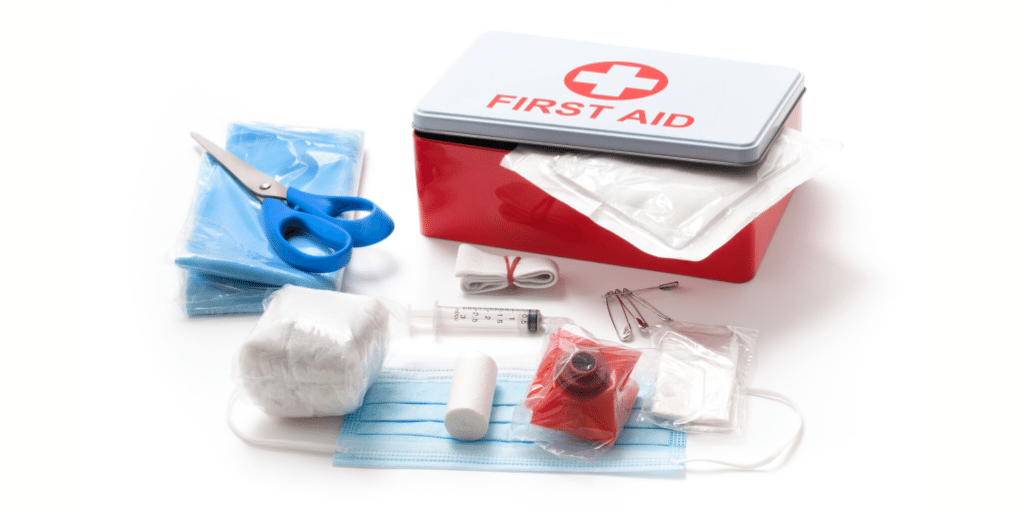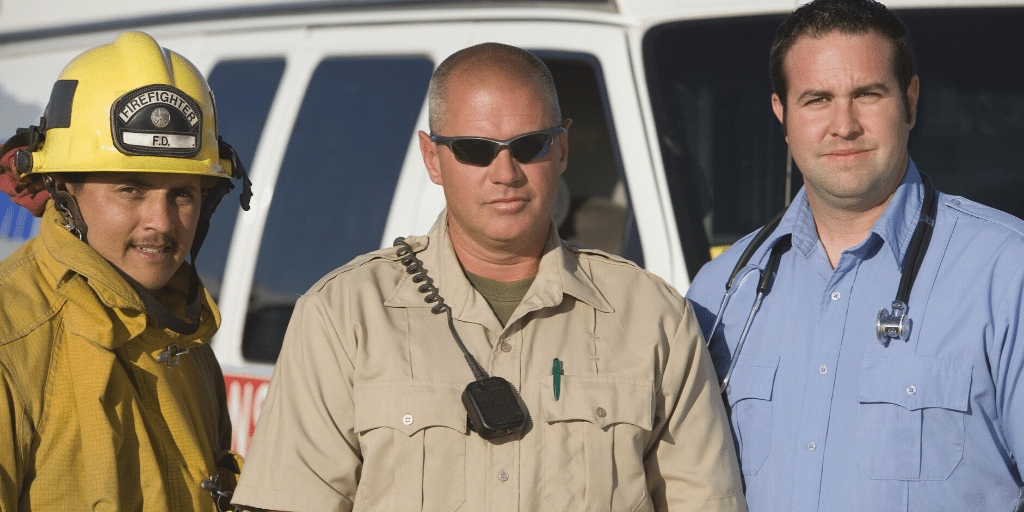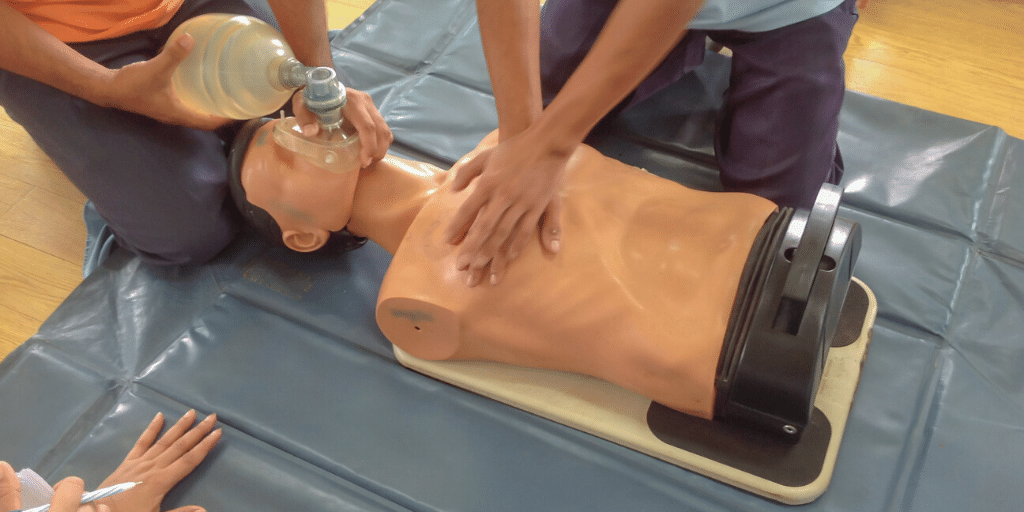How to Set Up a Community Emergency Response Team
Every municipality needs a trained community emergency response team in case a local disaster strikes.
You never know when an emergency will strike your community—which is why early preparation, community education, and constant vigilance are essential to keeping residents safe. One of the most effective ways of preparing your residents for a possible disaster is to involve them directly in the education, and response process. If your municipality has not already established a Community Emergency Response Team (CERT), learn what it takes to effectively implement a CERT that enables your residents to become an active part of their safety and preparedness.
Content:
How to Set Up a CERT in Your Community
What is a CERT?
CERTs help to educate residents about disaster preparedness for hazards that may impact your community, and train them in basic disaster response skills. CERTs are composed of resident volunteers who actively participate in classroom exercises to learn critical emergency response skills and commit to helping serve their community following a disaster activity when professional responders are not immediately available.
Properly trained CERT members can serve as extensions of professional emergency teams, giving critical support to first responders, providing immediate assistance to victims, organizing spontaneous volunteers at a disaster site, and helping with non-emergency projects that help improve the safety of the community.
CERT History
The CERT concept was initially developed and implemented by the Los Angeles City Fire Department (LAFD) in 1985 after the Whittier Narrows earthquake of 1987. This devastating event demonstrated the need for training civilians to serve an active role in the immediate response to community disasters and to do so in a safe and informed manner. Recognizing the importance of preparing residents for unexpected emergencies, the Federal Emergency Management Agency (FEMA), the Emergency Management Institute (EMI), and the National Fire Academy adopted and expanded the CERT training program. Since 1993 when CERT training was made available nationally by FEMA, communities in 28 states and Puerto Rico have conducted CERT training.
CERT Training
A trained team of professional first responders who have completed a CERT Train-the-Trainer course conducted by their state training office for emergency management, or by FEMA’s Emergency Management Institute (EMI), should instruct all future CERT trainers. At the individual participant level, communities should encourage all residents to take the CERT course to become better educated on how to respond immediately after a disaster to protect themselves, their families, their neighbors, and their community.
How to Set Up a CERT in Your Community
If you are ready to add a CERT to your community to enable residents to act confidently in response to an unexpected disaster, then follow the steps below to plan and launch with success.
Identify Program Goals
Start by identifying the program goals of your CERT. Include quantifiable elements such as:
- The number of initial trainers.
- The number of initial volunteers.
- Launch date.
Conduct a Hazard Analysis
Conduct a hazard analysis to determine the types of risks your community is most likely to face. For example, your area may be highly susceptible to floods, wildfires, snowstorms, tornadoes, or hurricanes. Use the results of your hazard analysis to prioritize and tailor volunteer CERT team training to ensure the greatest effectiveness.
Identify Needed Resources

Determine necessary program funding and any municipal physical resources. Factors that will impact costs and resources will include volunteer recruitment goals, number of trainers, marketing, and promotions, and ongoing recruitment and training. Additionally, such CERT team member supplies that you may need to budget for include:
- First aid kits.
- Hard hats.
- Safety goggles or eye shields.
- Respirators.
- Gloves.
- Team volunteer t-shirts.
- Team identification cards.
- Protective coveralls.
If necessary, consider applying for grant funding to supplement what your administration can offer from its budget.
Engage Elected Officials
Engage your community’s appointed and elected officials to gain support for establishing a CERT in your community.
Register Your CERT
Register your CERT on FEMA’s National Citizen Responder Programs Registration site at fema.gov. The program helps registered CERT program managers to operate their CERT programs and citizen corps councils properly. It offers such resources as:
- Instructions for building an emergency response kit.
- Information about emergency alert systems.
- Social media preparedness toolkits.
- Access to FEMA’s Preparedness Portal, where public safety leaders can register their events and connect with other programs and community leaders.
To register your CERT with FEMA, create an account at fema.gov
Understand Your Administration’s Liability
Talk to your legal counsel to understand the liability that individual volunteers and your administration may face relative to dispatching CERT members into the field during a disaster. Your legal counsel can help you create any waivers or legal documents that may be necessary to protect all those involved.
Civic Tip: Download Ready.gov’s CERT Liability Guide
Engage Local Emergency Responders

Identify emergency response leaders in your community to complete the CERT train-the-trainer certification.
Civic Tip: FEMA offers a Community Emergency Response Team Basic Training Instructor Guide. The guide includes an outline for teaching a CERT class and FEMA’s Hazard Annex. The Hazard Annex covers 13 natural and human-made hazards and can be used to give CERT students an overview of each danger.
Promote and Recruit
Promote your CERT program using multiple communication channels and recruit potential participants. Focus your recruitment efforts on community groups, business and industry workers, and staff within your local government administration.
Civic Tip: As part of your community emergency preparation strategy, be sure also to create a crisis communication plan. Click here to learn more about crisis communication planning.
Include the Next Generation of Community Leaders
Consider offering tailored training and limited volunteer opportunities for adolescent volunteers between the ages of 15 and 18. Teen CERT training resources are available at ready.gov/teen-cert.
Create a Training Schedule

Once you have adequately certified your initial crew of CERT trainers, build a regular, recurring schedule to hold CERT training. Focus initially on holding an annual training session, and then consider adding subsequent classes throughout the year based on the size of your community and your residents’ interest level. Be sure to invite past participants to future sessions as part of their refresher training.
Make the Training Experience Accessible and Inclusive
Prepare your CERT training room, materials, and staff to ensure the highest possible content accessibility and program inclusivity. FEMA recommends the following considerations to enable the most significant engagement and participation opportunities:
- Ensure your training facility is compliant with the Americans with Disabilities Act (ADA). This requirement means that individuals living with a physical disability will be able to access the room, if necessary, via a ramp or elevator.
Civic Tip: Click here for details on ADA requirements for buildings.
- Set up your classroom to be conducive to participation and engagement. For example, consider setting up seating in a “U”-shaped configuration that allows participants who are deaf or hard of hearing to see the instructor easily.
- If necessary, make a microphone available in the room so that participants who are hard of hearing can hear instructors and other participants more clearly, and be prepared to offer the use of an assistive listening system.
- Keep room lights on during instructional videos to increase visibility.
- If necessary, arrange for American Sign Language (ASL) interpreters or the use of Communication Access Realtime Translation (CART) providers; send them a list of terms with which they might not be familiar in advance.
- Secure interpreters or translators to participate in small-group breakout sessions, as necessary.
- Send participants training manuals in advance to enable advanced learning and personal preparation.
Leverage FEMA’s Training Schedule
FEMA’s CERT training for community groups is usually delivered in two half-hour sessions, one evening a week over seven weeks. The training consists of the following:
- Session I Disaster Preparedness: Addresses hazards to which people are vulnerable in their community. Materials cover actions that participants and their families take before, during, and after a disaster.
- Session II Disaster Fire Suppression: Briefly covers fire chemistry, hazardous materials, fire hazards, and fire suppression strategies. The primary focus is on the safe use of fire extinguishers, sizing up the situation, controlling utilities, and extinguishing a small fire.
- Session III Disaster Medical Operations Part I: Participants practice diagnosing and treating airway obstruction, bleeding, and shock by using simple triage and rapid treatment techniques.
- Session IV Disaster Medical Operations Part II: Covers evaluating patients by doing a head-to-toe assessment, establishing a medical treatment area, performing basic first aid, and practicing in a safe and sanitary manner.
- Session V Light Search and Rescue Operations: Participants learn about search and rescue planning, size-up, search techniques, rescue techniques, and, most important, rescuer safety.
- Session VI Disaster Psychology and Team Organization: Covers signs and symptoms that might be experienced by the disaster victim and worker. It addresses CERT organization and management principles and the need for documentation.
- Session VII Course Review and Disaster Simulation: Participants review their answers from a take-home examination and practice the skills that they have learned during the previous six sessions in disaster activity.
Hold Regular Drills
Thorough training will give your residents vital knowledge for how to act in an emergency to enable them to work quickly and with confidence, enable them to practice what they have learned.
Civic Tip: Click here for information about conducting public safety drills in your community.
Prepare for Potential Roadblocks
Anticipate challenges you may face, such as recruitment, marketing effectiveness with a minimal budget, or long-term program enthusiasm. Incorporate into your planning ways to mitigate your identified challenges to set your program up for long-term success.
Recognize Individual and Team Progress
Recognize CERT members for completing their training and provide them with identification cards, vests, helmets, or other applicable recognition materials.
Supplement with a Workplace CERT
Encourage employees in your administration to participate in a CERT created exclusively for your administrative staff members. Workplace CERT programs support and enhance community programs and showcase your administration’s dedication to civic action and emergency preparedness. Workplace CERTS also arm local government employees, and community members will look to when a disaster strikes with the skills and confidence to step in during an emergency, no matter what it is or where they are when it occurs. Follow the steps below to build a workplace CERT (note that many of the steps below apply to the building of your primary CERT as well):
Keep CERT Members Engaged
A successful CERT program requires ongoing fresher training and team engagement. Encourage CERT members to be prominent in the community by sponsoring events such as emergency response drills, and neighborhood clean-up events, and creating educational content that you can share on your local government website.
Reevaluate Goals Annually
As the needs of your community evolve and you begin to obtain feedback from CERT leaders, trainers, and participants, be willing to pivot and adjust your goals and strategies to optimize the effectiveness of your program.
Summary
Remember that a vital component of an impactful community emergency response program involves an effective emergency warning system. If you haven’t already invested in such a system, click below to take a five-minute self-guided tour of our Mass Notifications solution built for local government.
Bonus CERT Set-Up Checklist
If you’re ready to get started building a CERT in your community, download our CERT Checklist.
Additional Resources
FEMA Office of Disability Integration and Coordination
FEMA Getting Real- Promising Practices in Inclusive Emergency Management
Autism and First Responders: Seeing Beyond the Smoke
Preparing for Hurricanes: Prescription Medications
Preparing for a Hurricane or Other Tropical Storm


